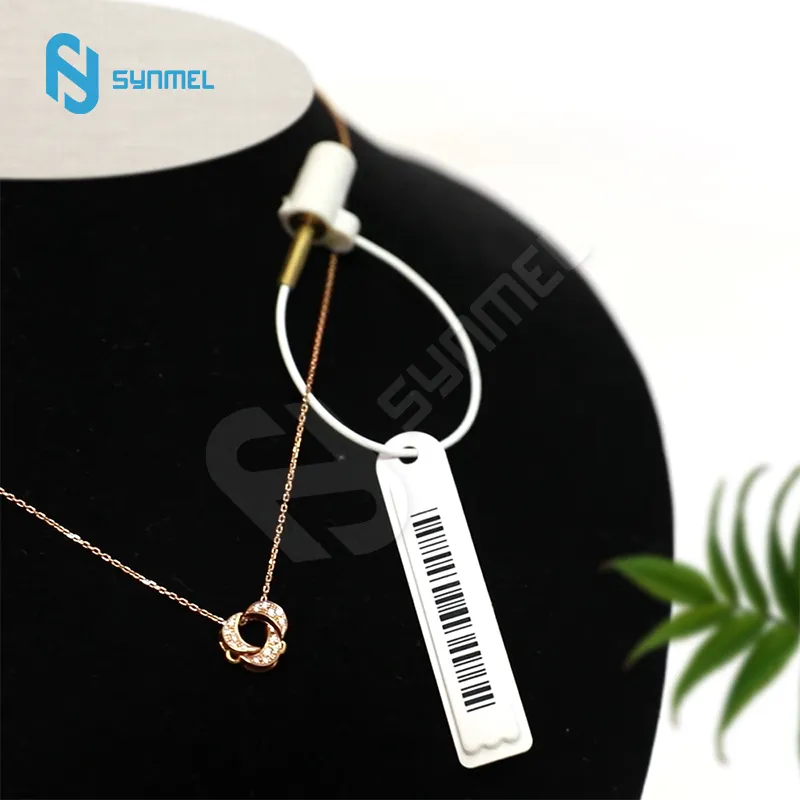- English
- Español
- Português
- русский
- Français
- 日本語
- Deutsch
- tiếng Việt
- Italiano
- Nederlands
- ภาษาไทย
- Polski
- 한국어
- Svenska
- magyar
- Malay
- বাংলা ভাষার
- Dansk
- Suomi
- हिन्दी
- Pilipino
- Türkçe
- Gaeilge
- العربية
- Indonesia
- Norsk
- تمل
- český
- ελληνικά
- український
- Javanese
- فارسی
- தமிழ்
- తెలుగు
- नेपाली
- Burmese
- български
- ລາວ
- Latine
- Қазақша
- Euskal
- Azərbaycan
- Slovenský jazyk
- Македонски
- Lietuvos
- Eesti Keel
- Română
- Slovenski
- मराठी
- Srpski језик
Working principle of jewelry anti-theft AM label
2024-10-09
The working principle of jewelry anti-theft AM label is similar to that of ordinary AM tags, but due to the special nature of jewelry, their design and application are also different. Here is how jewelry anti-theft AM tags work:
Working principle
Tag structure: Jewelry anti-theft AM label are usually made of acousto-magnetic materials that can resonate at a specific frequency (generally 58 kHz).
Excitation signal: At the exit of the jewelry store, the anti-theft system emits electromagnetic waves of a specific frequency. These electromagnetic waves excite the AM tag, causing the material inside it to resonate.
Resonance phenomenon: When the tag is excited, it emits a signal at a specific frequency. Once the signal generated by the tag is detected by the system, it indicates that unpaid jewelry is trying to leave the store.
Signal reception: The receiver at the exit monitors the passing items and triggers the alarm system if it receives a signal from the tag.
Tag removal: At checkout, the merchant will use special equipment to remove or demagnetize the tag to make it lose its resonance ability, thereby avoiding triggering the alarm at the exit.
Features
High security: AM tags are exquisitely designed and suitable for small and high-value goods such as jewelry.
Strong anti-interference ability: can work effectively in a variety of environments and reduce false alarms.
Hidden appearance: the tag can be designed to be smaller, easy to hide in jewelry packaging or accessories, without affecting the appearance.
Application scenarios
Widely used in places such as jewelry stores, watch stores and luxury retail stores to protect high-value goods from theft.
Through these technologies, jewelry anti-theft AM label can effectively improve the security of merchants and reduce the risk of loss.




